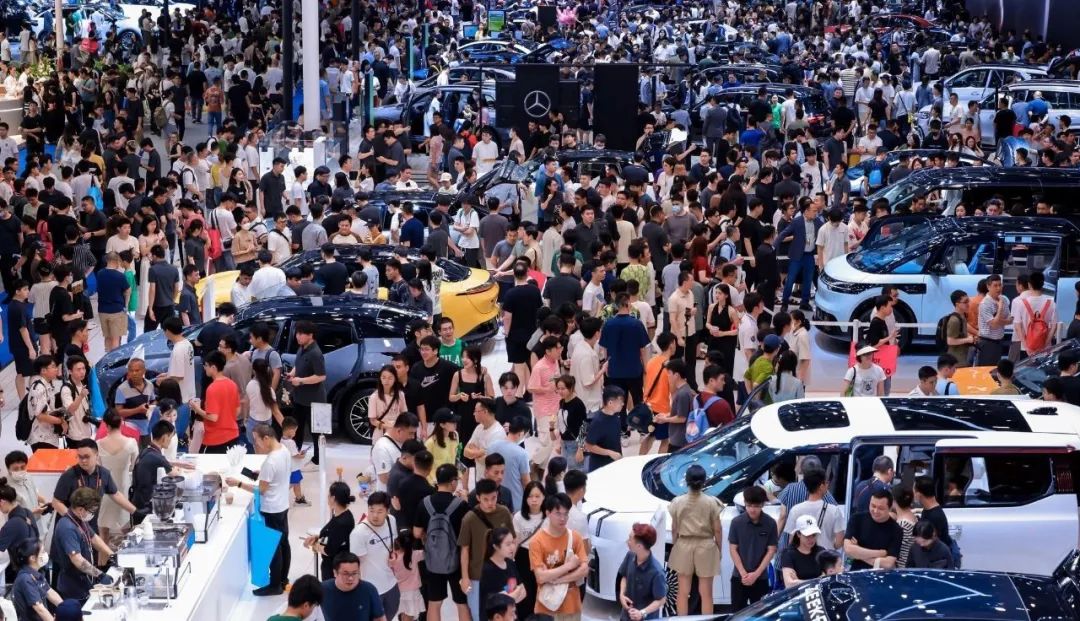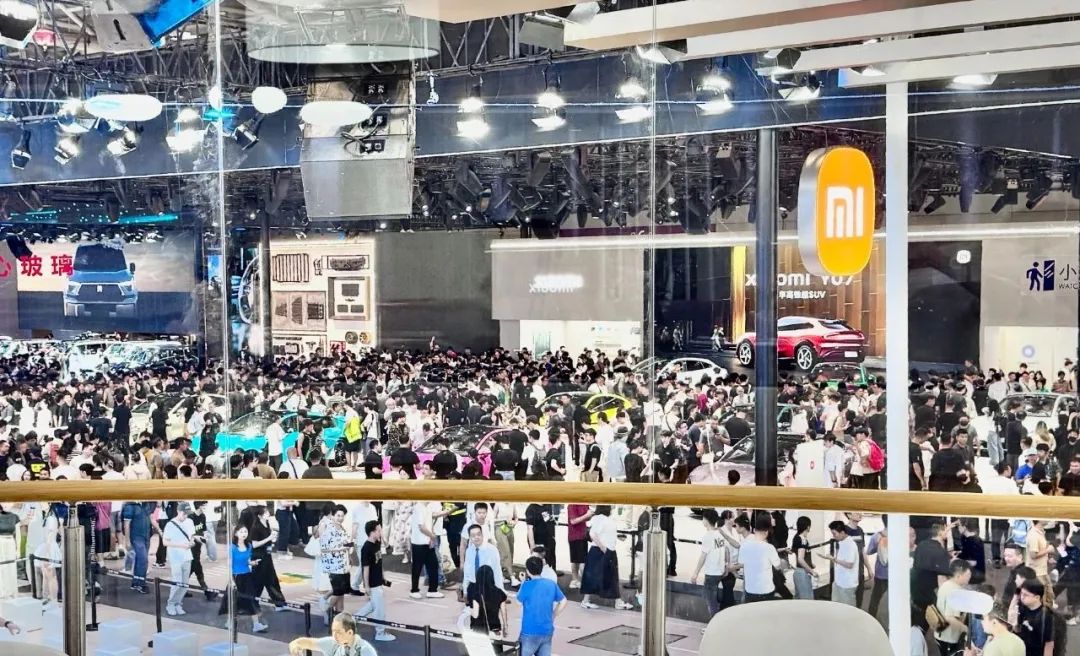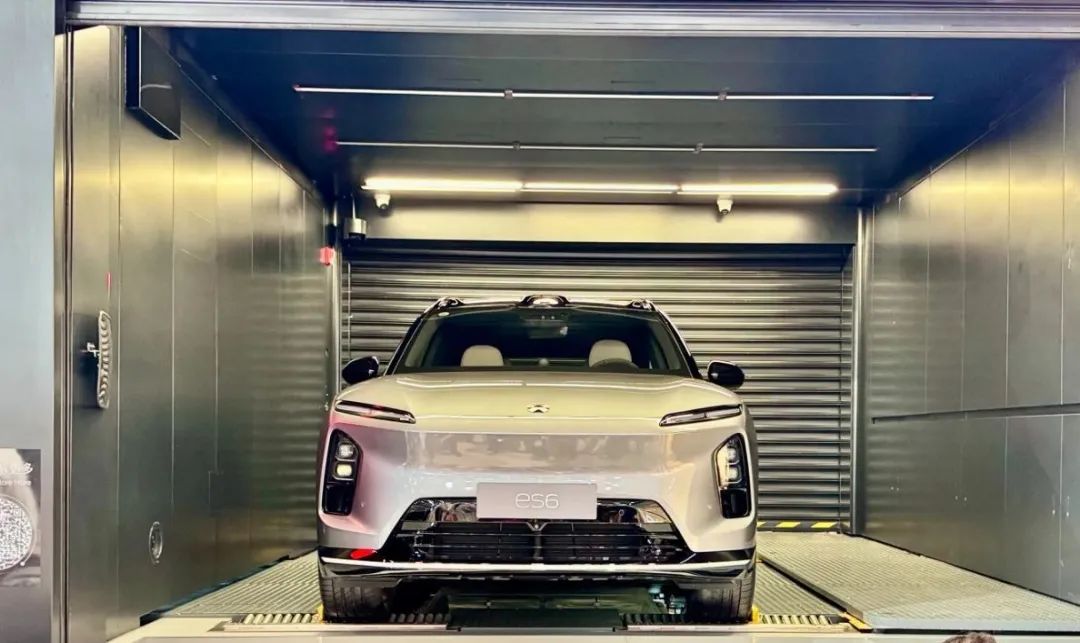Greater Bay Area Auto Show: Full of Competition and Traffic
![]() 06/03 2025
06/03 2025
![]() 664
664

Greater Bay Area Auto Show: A feast of automakers' revelry and competition.
Produced by | NPL Finance
Author | Wu Wenwu
In recent days, the major event in the automotive industry has been the ongoing Greater Bay Area Auto Show, with continuous hot topics, trending searches, and news.
NPL Finance visited the auto show on the first day (May 31) and found the venue packed with people, with popular automaker booths requiring visitors to move slowly.
According to Shenzhen Media Group's Shenzhen TV News, the first day of this year's Greater Bay Area Auto Show attracted over 180,000 visitors, setting a new record. It is estimated that a total of 450,000 visitors will participate in the auto show during the Dragon Boat Festival holiday, a 27.84% increase from the previous edition, with an expected transaction volume of 4 billion yuan, an 8.1% increase from the previous edition. Clearly, this year's Greater Bay Area Auto Show is a smash hit.
According to data from the event organizer, this year's Greater Bay Area Auto Show brought together 112 vehicle brands, 1,039 models, and 50 new car launches. Basically, all mainstream and popular traditional and new energy vehicle brands were present.
Overall, new energy vehicles were the stars of the show. Shenzhen-based automaker BYD was the undisputed "host," occupying an entire hall. Huawei's Hongmeng Intelligent Driving System vehicles made their debut, and new automaking forces such as Xiaomi, Zeekr, NIO, XPeng, and Li Auto also showcased their products.
In the view of NPL Finance, this year's Greater Bay Area Auto Show was a coexistence of competition, traffic, and rivalry, with a strong sense of rivalry, fierce competition for traffic, and rivalry everywhere.
01 Strong Sense of Rivalry: Yu Chengdong "Fires a Shot," Lei Jun Responds
Every national auto show always includes speeches by industry leaders, naturally sparking heated discussions. At this year's Greater Bay Area Auto Show, the rivalry was palpable, especially between Huawei's Hongmeng Intelligent Driving System and the internet celebrity Xiaomi.
Before the show, Yu Chengdong's remarks at the 2025 Future Automobile Pioneers Conference on May 30 created a stir, igniting the rivalry and fuse during the auto show.
Yu Chengdong said, "Everyone has seen that this company from another industry only made one car and it sold like hotcakes, even though its product might not be that good."
 Image / 2025 Greater Bay Area Auto Show, Source: Event Organizer
Image / 2025 Greater Bay Area Auto Show, Source: Event Organizer
Then, Yu Chengdong's tone took a sharp turn. "What about us? Our products are better, with better quality, experience, and performance, but our sales are nowhere near theirs."
Yu Chengdong continued, "It's precisely because this company has strong brand and traffic capabilities that one product can be a hit."
Although Yu Chengdong did not explicitly name the automaker, it was obvious who he was referring to. After all, among the current new automaking forces, only Xiaomi has achieved such success with a single car model.
It was expected that Xiaomi would remain low-key, but in response to Yu Chengdong's "shot," Xiaomi quickly took the bait.
That same evening, Xiaomi partner Lu Weibing responded on Weibo, saying that it wasn't because the SU7 sold well, but because it had gained a lot of attention and expectations even before its launch, thanks to its product strength. Xiaomi's General Manager of Public Relations, Wang Hua, also responded.
Surprisingly, Lei Jun himself responded, tweeting that Xiaomi's SU7 deliveries had exceeded 28,000 units and that preparations were underway for large-scale production of the YU7. Lei Jun also added a famous quote from Mo Yan: "Slander is a form of admiration."
However, embarrassingly, Lei Jun later revised his tweet and deleted the quote. Lei Jun's tweet and its revision both trended on Weibo.
Honestly, among the current new automaking forces, Xiaomi and Huawei-affiliated Hongmeng Intelligent Driving System are undoubtedly the two leading automakers. Although their main customer bases seem different, the competition on the front lines of the market is fierce.
The background of Yu Chengdong's remarks actually directly reflects the sales comparison between these two automakers.
According to media reports, in April this year, Xiaomi "killed three worlds with one meter," with sales of 28,585 units, surpassing the combined sales of 27,555 units of Huawei's Hongmeng series models (AITO, Vision, and Enjoy).
Fortunately, the latest May delivery rankings of new automaking forces show that AITO delivered 36,625 units, while Xiaomi delivered over 28,000 units. AITO returned to the top three, while Xiaomi held onto fifth place. AITO managed to temporarily regain an advantage.
This rivalry between Huawei's Hongmeng Intelligent Driving System and Xiaomi directly reflects the intensifying competition among new automaking forces, especially the leading automakers.
02 Traffic is King: Xiaomi's Popularity, Automakers Competing for Traffic
Since the rise of the new energy vehicle wave, especially the emergence of new automaking forces, competition in marketing among automakers has long surpassed that of the traditional fuel vehicle era.
At this year's Greater Bay Area Auto Show, NPL Finance still saw that traffic remains king. Lei Jun was absent, but Xiaomi was a hit. All automakers were vying for traffic, just in different ways.
At the auto show, although every automaker attracted many visitors, BYD and Huawei's Hongmeng Intelligent Driving System were the main traffic drivers, but Xiaomi was undoubtedly the most popular.
Visitors had to queue up to see Xiaomi's cars, often for more than ten to twenty minutes or even longer. It was clear that despite Lei Jun's absence, Xiaomi's cars were super popular.
NPL Finance observed at Xiaomi's booth that many of the people queuing to see Xiaomi's cars were young. Besides the SU7, more visitors wanted to see the YU7. We overheard two girls shouting, "Wow, Xiaomi!" even before they started queuing.
Since a high-speed explosion accident involving a Xiaomi SU7 occurred at the end of March, Xiaomi has been in a dark period. It took a long time for Lei Jun to gradually resume active social engagement recently.
However, judging from Xiaomi's popularity at the auto show, it seems that Xiaomi's cars have not been affected by the negative incident. Consumers and visitors still have a high level of enthusiasm for Xiaomi.
 Image / Xiaomi Car Booth, Photographed by NPL Finance
Image / Xiaomi Car Booth, Photographed by NPL Finance
Xiaomi has been adept at marketing since the mobile phone era and naturally excels at playing with traffic in the automotive industry. The key to Xiaomi's astonishing success is its precise grasp of contemporary young people's automotive consumption needs and aspirations.
Although many people have different opinions on automaker marketing and traffic creation, from the perspective of brand marketing and market communication, the rule of "traffic is king" is still valid in the new energy vehicle era, and can even be said to be long-term valid.
Of course, it's not just Xiaomi that excels at playing with traffic. Traditional automakers are also experts at it.
The traditional luxury automaker Audi is also a master of traffic. At the auto show, Audi invited "King of Pop" Andy Lau to appear at the FAW-Volkswagen Audi booth, drawing a crowd and bringing significant attention to the Audi brand.
In addition, the FAW-Volkswagen Audi's new model, the Audi A5L, booth also attracted many visitors, with some having to wait several minutes to experience the car.
Similarly, the Lexus booth attracted many visitors. Guangdong is an important regional market for Lexus, which specially launched multiple models of the Wan Yao special edition for this auto show, hoping to attract consumers.
Another noteworthy event was the official launch of Huawei's Hongmeng series Zunjie S800 on May 30, with a guidance price ranging from 708,000 to 1,018,000 yuan. This ultra-luxury executive sedan model was also showcased at the auto show, attracting the attention of visitors and the entire market.
Shenzhen is a young first-tier city with different types of consumers and diverse car purchasing needs, but traffic remains king. Different automakers have different audiences and their own traffic marketing methods, but the advantages of leading new automaking forces are more apparent.
03 Rivalry Everywhere: All for Car Sales
For automakers, the auto show is not only about showcasing brands and models and launching new cars. One of its critical goals is: selling cars, selling cars, selling cars, all for car sales.
At the venues of major automakers, in addition to staff, car models, security personnel, and visitors, there were also many local dealers and store salespersonnel.
To sell cars, automakers and booth salespeople took various measures and on-site discounts, showcasing their prowess.
For example, leading new energy automaker BYD occupied an entire hall, showcasing its brands such as BYD, Yangwang, Denza, and FANGCHENGBAO, as well as its technology systems. The overall style exuded a tech-savvy and engineering vibe, typical of BYD.
 Image / NIO Booth Showcasing Battery Swap, Photographed by NPL Finance
Image / NIO Booth Showcasing Battery Swap, Photographed by NPL Finance
Another example is the NIO booth, which, in addition to showcasing NIO, Ledao, and Firefly models, also demonstrated the battery swap process and platform on-site, with demonstrations occurring every two to three minutes and explanations by NIO staff.
At many automaker booths, brand representatives or 4S store staff worked hard to livestream, attract traffic, and offer discounts in the livestream to attract viewers and fans.
Salespeople at automaker booths worked hard to sell cars, adding visitors' contact information, calculating subsidies and quotes, with the competition being fierce.
For automakers, local dealers, and salespeople, the most important goal of this year's Greater Bay Area Auto Show is to sell more cars. After all, an auto show can offer significant discounts, which, combined with subsidies, can attract many potential car buyers.
Data shows that last year's 2024 Greater Bay Area Auto Show attracted over 860,000 visitors over nine days, with 40,026 vehicles ordered and a total order value exceeding 10 billion yuan.
If we estimate based on this year's auto show attendance, it is likely that the number of ordered vehicles and total order value will exceed last year's figures.
However, in the view of NPL Finance, combining the recently released May sales rankings of new automaking forces with firsthand observations from this year's Greater Bay Area Auto Show, sales are directly reflected in the popularity at the show.
According to the May delivery rankings of new automaking forces compiled by the media on June 1, the top three were Zero Running, Li Auto, and AITO, in that order.
Specifically, Zero Running delivered 45,100 vehicles, maintaining its position as the champion among new forces for three consecutive months with a year-on-year growth rate of 148%. Established player Li Auto ranked second with 40,800 deliveries, a year-on-year increase of 16.7%. Hongmeng Intelligent Driving, which had not released sales figures for the previous two months, finally "submitted its homework": the entire system (including AITO, etc.) delivered 44,500 vehicles in May. Calculating by single-brand models, AITO delivered over 36,600 vehicles in May, returning to third place.
Xiaopeng (33,500 vehicles), Xiaomi (over 28,000 vehicles), and NIO (23,200 vehicles), which had undergone brief adjustment periods, ranked fourth to sixth, respectively.
Currently, the development of China's new energy vehicle industry has entered the second half, with extremely fierce competition and an accelerated industry elimination race. No automaker, especially new automaking forces, dares to slack off.
In 2025, the entire new energy vehicle industry is eagerly awaiting Xiaomi's new model, the YU7, which has been announced but not yet launched. It is expected to have a significant impact on the industry.
The consumption of new energy vehicles is clearly stratified, making market competition extremely fierce. Local luxury automakers are striving to move up, mid-range automakers are fiercely competing, and low-end mass automakers are even more fiercely engaged in a battle.
Recently, BYD announced another major price cut, with discounts of up to 53,000 yuan for 22 models, sparking a new price war. Although many automaker executives and industry organizations have stated that they will not engage in price wars, in this era where sales are king, no one can escape price wars.
This year's Greater Bay Area Auto Show is a feast of automakers' revelry and competition. The auto show will continue until June 8, and the excitement will persist.








